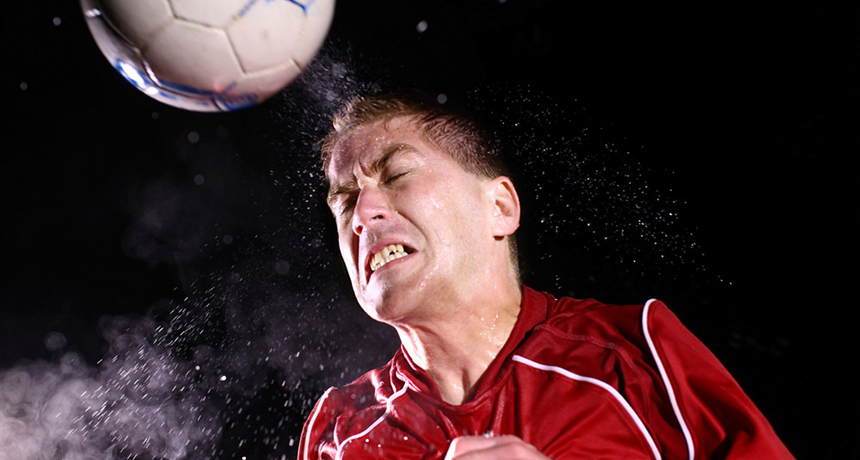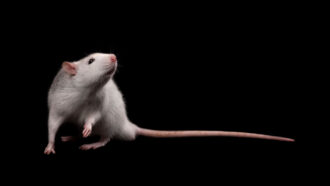Headers and memory loss
Soccer players who frequently use their heads score worse on memory tests

Soccer players who frequently head the ball scored worse on a memory test than players who perform headers less often.
iStockphoto
Soccer players who head the ball may use their noggin to score. But frequently heading the ball may lead to worse scores off the field.
In a recent study, players who did lots of headers performed worse on a memory test than players who didn’t head the ball as often. The same study also found that players who frequently headed the ball had more changes to their brain’s white matter. This tissue includes nerve fibers and their protective, white coatings. The fibers carry signals throughout the brain.
“These changes are subtle,” Inga Koerte told Science News. Koerte is a radiologist at Harvard Medical School and Brigham and Women’s Hospital in Boston. Radiologists use X-rays and other scanning technologies to image the brain and other internal organs. This helps them spot problems and diagnose illnesses. Koerte did not work on the new study but has previously studied the effects of soccer on the brain.
Data from the new study suggest that even header hits that don’t cause a concussion can affect thinking and harm the brain. A concussion is a sudden blow to the head that may leave a person unconscious or just dizzy.
Heading a soccer ball doesn’t usually cause a concussion, even though the ball may move as fast as 80 kilometers (50 miles) per hour, Michael Lipton told Science News. Lipton is a neuroscientist, or scientist who studies the brain. He worked on the new study as part of his research into concussions at Albert Einstein College of Medicine in New York City.
Lipton and his coworkers tested 37 amateur soccer players. The participants included 28 men and nine women. The players reported how many games and practices they’d had in the previous year. They also estimated how many times they’d headed the ball. Most reported hundreds of headers, though some reported thousands.
The scientists also gave the players a memory test. The nine players who reported the most headers scored worse, on average, than did the nine players who reported the fewest headers. But some of those nine players really used their heads: The researchers now estimate that more than 1,800 headers in a year could lead to memory loss.
To peer at the structure of the brain, the researchers used magnetic resonance imaging, or MRI. An MRI machine uses magnetic fields to take pictures, or scans, of the brain. Those scans showed that players who reported heading the ball the most had more changes to the white matter. The researchers found these changes most often in the back of the brain. That’s far from the part of the skull — the front — usually used to head the ball.
Lipton says that might be because during a header, the brain first presses against the front of the skull, then slams into the back. “When there is a head impact, the brain sloshes back and forth,” he explains.
Power Words
concussion Temporary unconsciousness, or headache, dizziness or forgetfulness due to a severe blow to the head.
neuroscience The study of the structure or function of the nervous system and brain.
amateur One who engages in a pursuit as a pastime, and not as a profession.
radiology The science dealing with X-rays and other high-energy radiation, especially the use of such radiation for the diagnosis and treatment of disease.
radiation The emission of energy as electromagnetic waves or as moving subatomic particles.
MRI, or magnetic resonance imaging A way of producing images of internal organs. MRI uses strong magnetic fields to record the activity of individual atoms.







